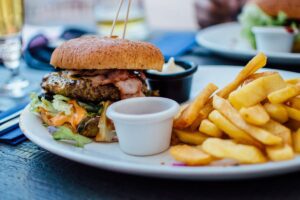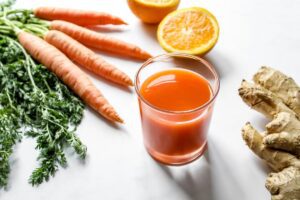

Keto, Paleo, or Vegan: Which Diet is Right for You?


Arya Soleil
The Paleo Diet, often called the Caveman Diet, takes inspiration from the dietary habits of early humans. It emphasizes consuming whole, unprocessed foods such as lean meats, fish, fruits, vegetables, nuts, and seeds. The concept is simple: eliminate modern processed foods and eat as naturally as possible. This diet is particularly appealing for those seeking nutrient-dense foods, individuals with food sensitivities or allergies, and athletes looking for protein-rich meals to support muscle recovery. However, challenges include the exclusion of grains and dairy, which can be difficult for many people, creative adjustments when dining out, and the higher cost of organic and high-grade ingredients.
In contrast, the Vegan Diet focuses entirely on plant-based foods, avoiding all animal products, including milk, eggs, and honey. Fruits, vegetables, grains, nuts, seeds, and legumes form the backbone of this diet. Many adopt Veganism for ethical and environmental reasons, in addition to the health benefits such as increased fibre intake and improved heart health. However, potential drawbacks include the risk of nutrient deficiencies in vitamin B12, iron, and Omega-3 fatty acids, the social challenges of finding vegan-friendly options, and the reliance on processed vegan alternatives that may be high in added calories and preservatives.
When deciding on the best diet for you, it’s essential to consider your goals. If weight loss is your priority, the Keto Diet might be the most effective choice. If ethical concerns drive your decisions, Veganism aligns with those values. For those looking to cut out processed foods and embrace a whole-food lifestyle, the Paleo Diet is a great fit.
Your lifestyle is another critical factor. If you’re always on the go, a diet like Keto may be challenging to maintain due to meal prep demands, whereas Veganism has become increasingly accessible with options available in many restaurants and stores. Similarly, your personal food preferences play a significant role. Meat lovers might prefer Paleo or Keto, while those who enjoy a variety of fruits and vegetables may gravitate toward Veganism. Most importantly, listen to your body. Different diets affect individuals uniquely, so observe how your body responds to any dietary changes.
Once you’ve chosen a diet that aligns with your goals and lifestyle, the next step is making it sustainable. A diet should not feel like a temporary fix but rather a long-term commitment to better health. Start by educating yourself. Understand the principles of your chosen diet, whether it’s learning about ketosis for Keto, the benefits of unprocessed foods for Paleo, or the environmental impact of Veganism. Knowledge deepens your commitment and helps you make informed decisions.
Planning is another key to success. Life is busy, and preparation can make all the difference. Meal prep on weekends, stock up on healthy snacks, and have go-to recipes ready. For Keto, you might prepare high-fat, low-carb meals like zucchini noodles with creamy Alfredo sauce. Paleo enthusiasts can batch-cook proteins like grilled chicken or salmon with roasted vegetables, while Vegans might turn to hearty soups with beans, quinoa, and colorful veggies.
Flexibility is crucial for long-term adherence. No one is perfect, and occasional indulgences or modifications won’t derail your progress. For example, enjoying a slice of birthday cake on Keto or navigating limited food options while traveling as a Vegan is perfectly acceptable. The key is to return to your plan at the next opportunity.
Lastly, monitoring your health ensures you stay on track. As your body adapts to a new diet, pay attention to energy levels, digestion, and overall well-being. For diets like Keto and Vegan, which require specific nutrient considerations, regular health checkups and blood tests can help identify and address potential deficiencies in iron, vitamin B12, or healthy fats.
In summary, choosing the right diet involves understanding your goals, lifestyle, and preferences, while maintaining a flexible and educated approach. A sustainable diet isn’t just about what you eat—it’s about creating a way of life that supports your long-term health and well-being.

Support is a cornerstone of success when adopting any new diet or lifestyle change. Surrounding yourself with a community of like-minded individuals, whether through online forums, local meetups, or social media groups, can provide a wealth of recipes, tips, and encouragement. These spaces allow you to connect with others navigating similar journeys, sharing successes and overcoming challenges together.
Equally important is being lenient with yourself throughout this process. No journey is perfect, and everyone experiences slip-ups along the way. What truly matters is how you recover and move forward. Instead of fixating on what went wrong, focus on the progress you’ve made and the positive steps you can take next. Sustainable change is about pacing yourself, not achieving perfection overnight.
When it comes to choosing between Keto, Paleo, or Vegan diets, the best option depends entirely on your personal goals, preferences, and values. Each diet has its unique strengths—whether it’s Keto’s focus on weight loss and energy optimization, Paleo’s emphasis on whole, unprocessed foods, or Veganism’s alignment with ethical and environmental concerns. The key is to find the approach that empowers you to live your best life, rather than one that feels restrictive or burdensome.
Take your time experimenting with different approaches and listening to your body. This isn’t about jumping on the latest trend but building a sustainable lifestyle that supports your physical and mental well-being for the long haul. Whatever diet you choose, approach it with balance, flexibility, and self-confidence. Your healthiest, happiest self is within reach when you focus on what works best for you.
FAQs
Can I have fruits on Keto?
Most fruits are high in carbs and not recommended for a strict Keto diet. However, lower-carb fruits like blueberries, raspberries, and strawberries can be enjoyed in moderation.How long does it take to enter ketosis?
On a strict low-carb, high-fat diet, it typically takes 2–4 days to enter ketosis. However, this timeframe can vary depending on individual metabolism and activity levels.Are grains permissible on Paleo?
No, grains such as wheat, rice, and oats are excluded from the Paleo diet. The focus is on foods that early humans would have consumed, like meat, vegetables, fruits, and nuts.How does Veganism differ from Vegetarianism?
Vegetarians exclude meat but still consume animal-derived products like dairy, eggs, and honey. Vegans, on the other hand, avoid all animal products, including dairy, eggs, and honey, focusing entirely on plant-based foods.
Recommended Reads

- December 29, 2024
Check out 7 truths and myths about diet
Have you ever heard of some diet myths that...


- December 29, 2024
Is fasting really a good option? Check out the precautions of this eating style
Living in a society that is based on a...


- December 29, 2024
Start having healthy habits with these 7 benefits of a balanced diet!
If you want to live a quality life, you...


- December 29, 2024
Check out the list of 54 anti-inflammatory foods for your diet!
A balanced diet ensures all the nutrients possible for a routine...


- December 29, 2024
Find out how to cut back on sugar in your diet!
It’s very likely that at some point in your...


- December 29, 2024
What are the benefits of each vitamin in your body?
If your goal is to have a healthy routine and...

Keto, Paleo, or Vegan: Which Diet is Right for You?

The Paleo Diet, often called the Caveman Diet, takes inspiration from the dietary habits of early humans. It emphasizes consuming whole, unprocessed foods such as lean meats, fish, fruits, vegetables, nuts, and seeds. The concept is simple: eliminate modern processed foods and eat as naturally as possible. This diet is particularly appealing for those seeking nutrient-dense foods, individuals with food sensitivities or allergies, and athletes looking for protein-rich meals to support muscle recovery. However, challenges include the exclusion of grains and dairy, which can be difficult for many people, creative adjustments when dining out, and the higher cost of organic and high-grade ingredients.
In contrast, the Vegan Diet focuses entirely on plant-based foods, avoiding all animal products, including milk, eggs, and honey. Fruits, vegetables, grains, nuts, seeds, and legumes form the backbone of this diet. Many adopt Veganism for ethical and environmental reasons, in addition to the health benefits such as increased fibre intake and improved heart health. However, potential drawbacks include the risk of nutrient deficiencies in vitamin B12, iron, and Omega-3 fatty acids, the social challenges of finding vegan-friendly options, and the reliance on processed vegan alternatives that may be high in added calories and preservatives.
When deciding on the best diet for you, it’s essential to consider your goals. If weight loss is your priority, the Keto Diet might be the most effective choice. If ethical concerns drive your decisions, Veganism aligns with those values. For those looking to cut out processed foods and embrace a whole-food lifestyle, the Paleo Diet is a great fit.
Your lifestyle is another critical factor. If you’re always on the go, a diet like Keto may be challenging to maintain due to meal prep demands, whereas Veganism has become increasingly accessible with options available in many restaurants and stores. Similarly, your personal food preferences play a significant role. Meat lovers might prefer Paleo or Keto, while those who enjoy a variety of fruits and vegetables may gravitate toward Veganism. Most importantly, listen to your body. Different diets affect individuals uniquely, so observe how your body responds to any dietary changes.
Once you’ve chosen a diet that aligns with your goals and lifestyle, the next step is making it sustainable. A diet should not feel like a temporary fix but rather a long-term commitment to better health. Start by educating yourself. Understand the principles of your chosen diet, whether it’s learning about ketosis for Keto, the benefits of unprocessed foods for Paleo, or the environmental impact of Veganism. Knowledge deepens your commitment and helps you make informed decisions.
Planning is another key to success. Life is busy, and preparation can make all the difference. Meal prep on weekends, stock up on healthy snacks, and have go-to recipes ready. For Keto, you might prepare high-fat, low-carb meals like zucchini noodles with creamy Alfredo sauce. Paleo enthusiasts can batch-cook proteins like grilled chicken or salmon with roasted vegetables, while Vegans might turn to hearty soups with beans, quinoa, and colorful veggies.
Flexibility is crucial for long-term adherence. No one is perfect, and occasional indulgences or modifications won’t derail your progress. For example, enjoying a slice of birthday cake on Keto or navigating limited food options while traveling as a Vegan is perfectly acceptable. The key is to return to your plan at the next opportunity.
Lastly, monitoring your health ensures you stay on track. As your body adapts to a new diet, pay attention to energy levels, digestion, and overall well-being. For diets like Keto and Vegan, which require specific nutrient considerations, regular health checkups and blood tests can help identify and address potential deficiencies in iron, vitamin B12, or healthy fats.
In summary, choosing the right diet involves understanding your goals, lifestyle, and preferences, while maintaining a flexible and educated approach. A sustainable diet isn’t just about what you eat—it’s about creating a way of life that supports your long-term health and well-being.

Support is a cornerstone of success when adopting any new diet or lifestyle change. Surrounding yourself with a community of like-minded individuals, whether through online forums, local meetups, or social media groups, can provide a wealth of recipes, tips, and encouragement. These spaces allow you to connect with others navigating similar journeys, sharing successes and overcoming challenges together.
Equally important is being lenient with yourself throughout this process. No journey is perfect, and everyone experiences slip-ups along the way. What truly matters is how you recover and move forward. Instead of fixating on what went wrong, focus on the progress you’ve made and the positive steps you can take next. Sustainable change is about pacing yourself, not achieving perfection overnight.
When it comes to choosing between Keto, Paleo, or Vegan diets, the best option depends entirely on your personal goals, preferences, and values. Each diet has its unique strengths—whether it’s Keto’s focus on weight loss and energy optimization, Paleo’s emphasis on whole, unprocessed foods, or Veganism’s alignment with ethical and environmental concerns. The key is to find the approach that empowers you to live your best life, rather than one that feels restrictive or burdensome.
Take your time experimenting with different approaches and listening to your body. This isn’t about jumping on the latest trend but building a sustainable lifestyle that supports your physical and mental well-being for the long haul. Whatever diet you choose, approach it with balance, flexibility, and self-confidence. Your healthiest, happiest self is within reach when you focus on what works best for you.
FAQs
Can I have fruits on Keto?
Most fruits are high in carbs and not recommended for a strict Keto diet. However, lower-carb fruits like blueberries, raspberries, and strawberries can be enjoyed in moderation.How long does it take to enter ketosis?
On a strict low-carb, high-fat diet, it typically takes 2–4 days to enter ketosis. However, this timeframe can vary depending on individual metabolism and activity levels.Are grains permissible on Paleo?
No, grains such as wheat, rice, and oats are excluded from the Paleo diet. The focus is on foods that early humans would have consumed, like meat, vegetables, fruits, and nuts.How does Veganism differ from Vegetarianism?
Vegetarians exclude meat but still consume animal-derived products like dairy, eggs, and honey. Vegans, on the other hand, avoid all animal products, including dairy, eggs, and honey, focusing entirely on plant-based foods.

Arya Soleil
More Topics


The Incredible Health Benefits of Cucumbers: Why This Hydrating Superfood Deserves More Attention

Is Eating Raw Food Really “Too Extreme”? Rethinking Health Before It’s Too Late

The Truth About Bacon: Is It Really Bad for You?

Why Grass-Fed Butter is Good for You

Top 4 Vitamins for Brain Health: Nourish Your Mind Naturally
Recommended Reads

- December 29, 2024
Check out 7 truths and myths about diet
Have you ever heard of some diet myths that...


- December 29, 2024
Is fasting really a good option? Check out the precautions of this eating style
Living in a society that is based on a...


- December 29, 2024
Start having healthy habits with these 7 benefits of a balanced diet!
If you want to live a quality life, you...


- December 29, 2024
Check out the list of 54 anti-inflammatory foods for your diet!
A balanced diet ensures all the nutrients possible for a routine...


- December 29, 2024
Find out how to cut back on sugar in your diet!
It’s very likely that at some point in your...


- December 29, 2024
What are the benefits of each vitamin in your body?
If your goal is to have a healthy routine and...

